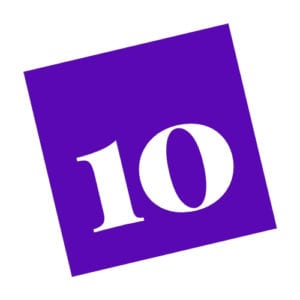Focus on your user, pay attention to your page speed, and don’t underestimate aesthetics. Your website is your big chance to tell the world who you are. Make sure you do it right.
When it comes to online marketing, the first thing that comes to mind is strategy: SEO, tools like Google Ads, social media, and other assets. But in 2019, things are changing. And what’s more important than ever- and something that is easy to underestimate- is quality web design.
Every day the world is becoming more and more reliant on the internet. But does the design of your website really affect your bottom line that much? All websites are not created equal, and web design’s impact on conversion rates clearly reveals itself in the statistics.
Here are 10 web design statistics you probably didn’t know on everything from first impressions to user expectations to digital trends in 2019.

It takes 50 milliseconds for a user to decide if they like your website.
Congratulations! You have a leisurely window of 0.05 seconds1 to convince your user to stay on your website. This is even briefer than the 7 seconds it takes us to decide if we like a person. Clearly, humans trust businesses even less than we trust each other- and that’s really saying something
Since nobody on earth (exempting Google and our other robot overlords) can possibly read anything in 0.05 seconds, this means your web design is what makes or breaks that first impression. In an oversaturated digital marketplace where 40% of revenue is generated online, first impressions really count.

38% of people will stop engaging with a website if its design is unattractive.
Content matters, but design matters more. Your website says a lot about your brand and who you are as a company. And design is a lot more than just aesthetics- intuitive site structure, ease of navigation, and seamless UX are critical in 2019.
Digital trends in web design reveal that if customers experience any inconvenience at all when interacting with your website, they’ll quit. There are simply too many options to choose from online, so customer expectations are increasingly high.
Your web design needs to be smart and client-centered. Otherwise, it’s costing you business. Jonroc helps you understand how customers interact with your website. We build your design around streamlining that customer journey from start to finish. You can contact us to learn more about how we can help increase your leads and sales.
Stay updated with the Jonroc newsletter.
You’ll actually want to read this one.

75% of consumers say they judge a company’s credibility based on web design aesthetics.
I know, consumers are sounding pretty fascist right now. But think about it. As digital consumers (and many of us digital natives), we are exposed to a lot of different entities online- not all of them legit.
We might not admit it, but if a company’s website looks like it’s from 1998, you might start to doubt their expertise and capability of other things. Similarly, if your website looks exactly like every other website in your industry you have lost an opportunity to make a memorable first impression. And if a website is slow to load or confusing to interact with, you might start to feel like that company is inconsiderate of your time.
When a customer clicks on your website, you don’t want the first thing they feel to be frustration or disappointment. Especially when it comes to online transactions, trust is everything. Your website tells the world who you are: tell them you’re modern, capable, clever, unique, and someone to be trusted.

53% of mobile users and 40% of desktop users will leave a website if it takes longer than 3 seconds to load.
Yes, this statistic looks dire- but again, don’t panic: it’s fixable. Unfortunately, the transition to mobile is something companies are struggling to adapt to.
You might think your page speed is perfectly fine- you’ve never had a problem with it. But then we’re missing the key point: On average a the very least 40% of your site visitors are using mobile devices. Not all of them have great internet. And even if your site loads reasonably fast, other websites are faster.
According to Google, the average page load speed of most mobile websites is a tragic 22 seconds.2 This might sound impossible, but it completely makes sense from the technical side. Just because website content is visible doesn’t mean all the site elements behind the scenes have finished being downloaded by the browser. This lag is especially apparent on mobile devices.
You can check your website’s page speed with the free tool GTmetrix.

For every additional second of page loading time, online sales drop 27%.
This one speaks for itself. The
3
Slow page speed = potential customers lost. They already clicked on your website! If they click away because your site won’t load, then whatever promotion, ad campaign, or great strategy you designed to get them there is wasted money and time.
If a consumer clicks away because your website won’t load, then whatever promotion, ad campaign, or strategy you designed to get them there was wasted money and time.
Custom-designed websites have better page speed (if the designer is worth their salt), but that’s not your only option: even if you use a template-based CMS, you can do research on Google or reach out to a professional web design agency for help.

Slow-loading websites cost retailers $2.6 billion in lost sales each year.
If you’re noticing a trend here, it’s no coincidence. Website speed matters!
This one’s from a research survey by data platform Qubit. The survey white paper reported that customers are becoming more impatient, but companies aren’t seeing site speed as a priority- and unfortunately, they’re paying the price.

44% of visitors will leave a website if they can’t find the company’s contact info right away.
In a Web Usability Report conducted by KoMarketing, researchers found that customers are less likely to trust a company if they can’t find contact information on your website. After all, how will they solve potential complaints or reach you with their questions?
The survey also found that 51% of consumers say contact information is the single most important element most websites are missing.
4 Digital marketers are trying to learn from this.
51% of consumers say contact information is the single most important element most websites are missing.
In brief, you need to convince consumers that you are accessible and they can trust you. Having contact information readily displayed shows visitors you’re legit. (If you don’t have your business’s contact info in an easy to find location on your website, seriously: go fix this right now.)

Users spend an average of 5.59 seconds reading the written content on your website.
Okay, we get it: we don’t read. However, whatever it is your user does read matters a lot. Make sure whatever copy you have on your website is crystal-clear and compelling so it conveys in 5.59 seconds what you truly want to tell them about your brand.

70% of small businesses don’t display a clear call-to-action on their website homepage.
If you’re unfamiliar with the term, a call-to-action (CTA) is a brief statement designed to engage your audience or invite them to interact with you. Including a CTA is important because you want users to interact with your website and develop a relationship with your company. And truly, most users want to interact.
Calls-to-action
utili ze action verbs: download, share, register, buy, invite, call, follow, order, or sign up.
This is also a great first step in the customer journey. There are unlimited examples of calls-to-action: from newsletter
The possibilities are endless. Either way, including a

It takes 2.6 seconds for a user’s eyes to land on the area of the website that will influence their opinion the most.
Researchers at Missouri University of Science and Technology tracked the eye movements of users as they interact with websites, then monitored how long it took users to find a point of focus on the page before they moved on to another section. They found that the longer the user stayed on their first point of focus, the longer they stayed on the website overall.
This means the arrangement of different elements on your website’s homepage- from logos to social media icons to images to quotations- should be intentional.
Some experts recommend arranging your website content in an F shape to make it easy for users to scan.
Internet users scan websites as a lot like reading a book, from left to right, and then read vertically down the page. Many experts recommend arranging content in an F shape to draw users’ attention to the right places as they scan
Researchers found that six elements were the primary points of focus that formed user impressions: website logo, navigation menu, the search bar, the main website image, text at the bottom of the homepage, and visible written content.
As business owners, make sure those six elements on your website convey the best possible impression of your brand.
In Context: Design is Everything
“In a crowded market, having a website that simply serves as a brochure is no longer competitive.”
— 2016 Small Business Trends Report
There’s a lot to do on the internet, and the chief benefit of finding information online is that we can do it quickly. Watch yourself next time you’re browsing the internet and ask yourself these questions: why did I click on that link or that post? How long did I actually spend reading it? Why did I leave?
You’ll probably notice that we make most of our online decisions almost instantaneously. Our minds are trained to rapidly process vast quantities of information simultaneously, so we’re trained to choose which information we want extremely quickly. Time is a limited asset.
As a business owner with a website, your user’s attention is a precious commodity and you will quickly lose it quickly if you’re not careful. Internet users today have everything they want available at their fingertips. So why should they stay on your website, and what is it that makes them leave?
As a business owner with a website, your user’s attention is a precious commodity and you will quickly lose it if you’re not careful.
More and more research is revealing that design is everything. It turns out users just want a pleasant experience that’s aesthetic, usable, and stimulating without being overwhelming. In brief, they want your website to meet their needs and to appeal to the senses as they interact with it so it feels rewarding to do so.
In fact, if users don’t like your web design, data shows us they will ditch you without a second thought. These are clients you are losing. Being informed about how users interact with your website can really make a difference in your ROI, and could even reveal what’s holding you back from success.
So what’s the big takeaway?
Web design is something any company, big or small, can master.
So what’s the big takeaway? Your web design needs to be smart and client-centered. Otherwise, it’s costing you business.
The good news is that it doesn’t have to. Web design is something any company, big or small, can master, and based on digital trends in 2019, it’s important that we do.
Focus on your user, pay attention to your page speed, and don’t underestimate aesthetics. Your website is your big chance to tell the world who you are. Make sure you do it right
If your business needs a new website to keep up with the latest industry research and boost your ROI stress-free, contact our web design team at Jonroc for more information at contact@jonroc.com.
This was a great read, wasn’t it?
If you want more web design inspiration and the latest business tips, sign up for our newsletter.
Read More Great Content
- No SSL? 46% of visitors are leaving your site & brand.
- 5 SEO Mistakes You Can Fix On Your Website Right Now
- The Pros and Cons of DIY Websites
- Telling Stories With Data
- The SEO Raceway
Web Design Statistics Sources:
- Adobe; Econsultancy. (2017). Digital Trends Report 2017.
- Adobe. (2016). The State of Content: Rules of Engagement.
- Clutch. (2018). Small Business Websites in 2018 Research Survey.
- GoodFirms. (2018). Web Design Stats and Trends for Small Businesses.
- Society of Digital Agencies. (2014). Digital Marketing Outlook Report.
- Adobe; Econsultancy. (2018). Digital Intelligence Briefing: 2018 Digital Trends.
- Google AI; International Journal of Human-Computer Studies. (2016). The role of visual complexity and prototypicality regarding first impression of websites: Working towards understanding aesthetic judgments.
- Akamai. (2015, September). Case Study: Mobile pages that are 1 second faster experience up to 27% increase in conversion rate.
- BuyerZone; Huff Industrial Marketing; KoMarketing. (2015, April.) 2015 B2B Web Usability Report: What B2B Buyers Want from Vendor Websites.
